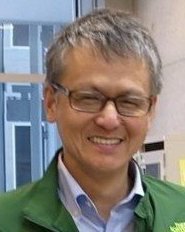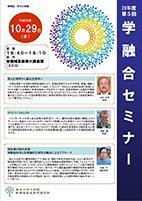AY2014 5th Gakuyugo Seminar
- Date&Time:
- Oct 24, 2014 16:40~18:10
- Venue:
- Large Lecture Room (2C0), New Frontier Science Bldg.

From Biology of Seeing to Biology of Making
Professor Takuya Ueda
Dramatic advances in technology for analyzing living organisms have led to the accumulation of a vast amount of knowledge about the types, structures, and functions of the molecules that make up living organisms. Based on this data, a new type of biology, synthetic biology, is emerging to challenge the synthesis of life. In synthetic biology, there are two types of research: the approach that tries to turn cells into cyborgs by manipulating their genetic circuits, and the bottom-up approach that assembles cells from molecules. I would like to discuss the prospects of synthetic biology, focusing on the latter type of research.

Cyber Forest
Professor Kaoru Saito
Under the theme of "Real Nature Beyond the Internet," we will discuss the research project "Cyberforest," in which data from cameras, microphones, and meteorological sensors installed in six forests in Japan is being distributed live and archived for public viewing. The presentation will include a demonstration. In addition, the presentation will introduce case studies of the use of Cyberforest data in environmental education through the creation of environmental education materials on seasonal and secular changes in forests and classroom practices at elementary and junior high schools.

Brain Representation of Object Images: A Combined Approach of Experimental Neuroscience and Computational Research
Visiting Professor Manabu Tanifuji
We are able to recognize object images under various visual environments (e.g., independent of subtle differences in viewpoint or shape). It has been shown that the brain decomposes visual object images into graphic features, but it is not known what kind of graphic features the brain decomposes into to achieve the above object recognition. However, it is still unclear what kind of graphic features can be decomposed into such features to achieve object recognition. We have succeeded in identifying the responses of cells in the monkey visual association cortex using machine learning methods, and have finally taken the first step to approach this problem. In this seminar, we will discuss the framework of object recognition inferred from experimental neuroscience research, its problems, and methods for extracting shape features by machine learning.
*The contents of this page were developed based on a machine translation.

